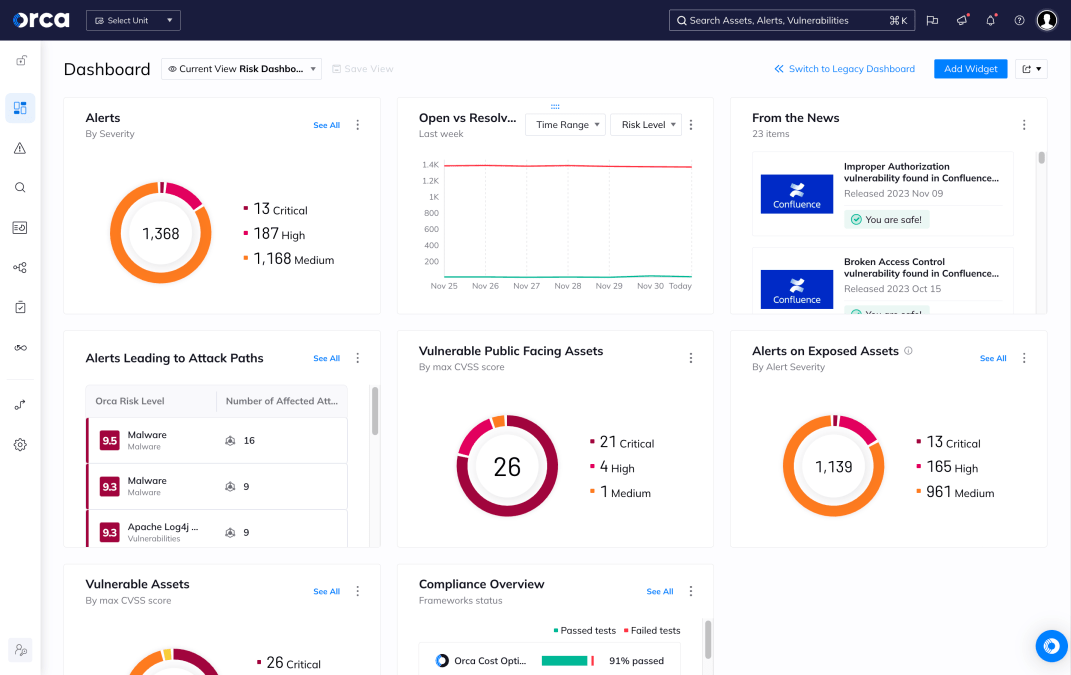Modern organizations move fast in the cloud. But as the pace of development accelerates, many are discovering a critical gap in their security strategy: cloud security and application security (AppSec) are still treated as separate disciplines. This disconnect creates inefficiencies, redundant tooling, and missed vulnerabilities that fall through the cracks.
One session from Orca’s recent Cloud Security Live event featured security experts from Orca and Snyk to answer a vital question: How can organizations unify their cloud and application security efforts for stronger, more efficient protection?
This post presents the top five takeaways from the session, providing a practical framework for unifying security across your organization—pre-deployment through runtime.
1. Native security tools alone aren’t enough
It’s a common misconception that cloud providers handle all aspects of security. In reality, public cloud environments operate under a shared responsibility model: providers secure the infrastructure, but everything running on top of it—applications, configurations, access policies, etc.—is your responsibility.
Native security tools may help when you’re just getting started. But as your environment grows more complex or becomes multi-cloud, these native solutions lack the visibility and context needed to manage risk at scale. Effective security at scale requires unified visibility and capabilities. Cloud-Native Application Protection Platform (CNAPP) that offer Application Security (AppSec) capabilities can enable you to not only detect, prioritize, and remediate cloud security risks, but also begin preventing them.
2. Silos between AppSec and cloud security teams create risk
Organizations often maintain separate teams for AppSec and cloud security under the assumption that specialization leads to better outcomes. But in practice, these silos can cause real damage:
- Conflicting priorities lead to bottlenecks—such as security blocking a release with no context on the codebase.
- Developers see security as an obstacle, while security teams see developers as sources of risk.
- When vulnerabilities emerge (e.g., Log4j), no single team has the full picture of what’s deployed, what’s vulnerable, and who owns the fix.
The solution? Build shared context and trust between developers and security. Security should provide actionable, prioritized guidance. Developers should be empowered—not burdened—to remediate. Both sides must work together toward the same outcome: secure, reliable software delivered at speed.
3. Security must start early in the SDLC to enable agility
Security teams often try to insert themselves after development, reviewing code or infrastructure just before deployment. This creates unnecessary friction and delays.
Instead, security should be integrated early and often in the software development lifecycle (SDLC):
- Use static analysis (SAST), software composition analysis (SCA), and infrastructure-as-code (IaC) scanning as early as possible in the software development lifecycle (SDLC), including in IDEs as developers write code.
- Provide feedback loops that help developers catch issues before they become production risks.
- Automate scanning in the CI/CD pipeline to enforce policy and reduce last-minute surprises.
When security is embedded into existing workflows—and when feedback is fast and actionable—developers are more likely to adopt secure practices without slowing down.
4. Disconnected tools mean disconnected risk
Many organizations have both AppSec and cloud security tools—but without integration, those tools provide siloed data that’s hard to correlate.
A cloud security tool may flag risks in a running container, while an AppSec scanner may find vulnerabilities in the container’s underlying container image. Without unified visibility across cloud and application security, teams must manually make the connection between these findings. This not only adds significant work and time to the process, it also increases the likelihood of human error.
Integrated tooling enables teams to trace a risk from a cloud asset to the container image, then to the source repository, and even to the developer who made the last commit. This cloud-to-development traceability enables faster, more accurate remediation—and reduces time spent chasing vulnerabilities that aren’t deployed or in production.
5. Developers can handle security—with the right support
In today’s cloud-native world, security can’t scale unless developers take an active role. Security teams are often drastically outnumbered by developers and simply can’t keep up with the pace of change.
But developers don’t need to be security experts. They need intuitive tools that plug into their workflow, offer actionable remediation guidance, and help them fix issues quickly. Whether it’s a suggested code fix, a version upgrade, or even an auto-generated pull request, these enhancements make it easier for developers to do the right thing—without breaking stride.
When security meets developers where they work, it becomes a force multiplier rather than a bottleneck.
Unify people, process, and tooling
Cloud and application security are no longer separate concerns. As organizations embrace cloud-native development, these two domains must operate in sync. Aligning teams, integrating tools, and empowering developers to act on security risks are the key pillars of a unified security strategy.
Rather than relying on fragmented processes and disconnected data, the future of security lies in context-rich, collaborative workflows that span from development to cloud. It’s not just about reducing risk—it’s about doing so in a way that supports agility, innovation, and scale.
By breaking down silos, organizations can build a more resilient, efficient, and developer-friendly security program—one that’s equipped for today’s complex cloud environments. Catch the entire discussion and all the other sessions here.





